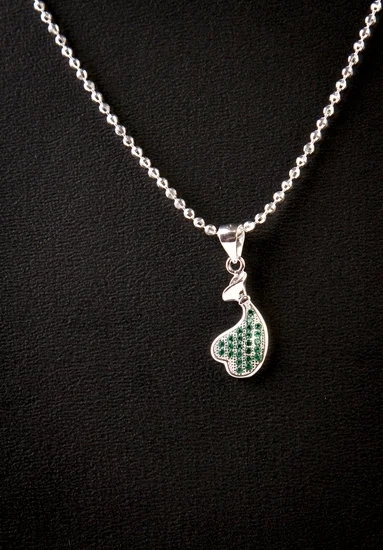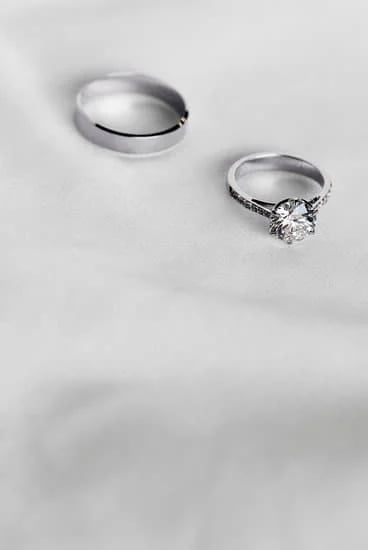Making jewelry to diy has many benefits for both beginners and experienced jewellery-making artisans. First of all, it is a way to express yourself creatively in the comfort of your own home. This allows you to explore different artistic possibilities either alone or with friends right at your fingertips.
Unlike retail shop items, you can find the exact combination of materials, colors, textures and shapes that suit your personal style. Crafting beautiful personalized pieces of jewelry also adds a sense of accomplishment to any hobbyist’s day.
Inexpensive and Fun Activity
Jewelry making as a hobby is relatively inexpensive compared to other crafts like woodworking or painting. You can get started with minimal investment through a visit to your local craft store or online marketplaces offering jewelry-making supplies.
As the cost for ingots, beads and other accessories vary greatly, depending on the material’s quality and variety, even the budget-conscious DIYer can make valuable pieces out of coins, shells and gems found in nature or picked up from antique shops.
Benefits for Personal Development
Finally, making your own unique jewelry can be an uplifting experience for any enthusiast looking for self-improvement in terms of developing patience and mastering multiple techniques ranging from beading, wire wrapping and chain maille projects. By experimenting with these techniques one learns practical skills such as soldering chain links as well as how to plan and design more complicated multi-step pieces like necklaces or charms with various details like giving them hammered surfaces or filing edges cleanly.
Each successfully completed piece provides satisfaction and perfection on every level in addition to saving the cost associated with costly pre-fabricated store bought items.
Getting to Know Your Materials
When it comes to making jewelry at home, there are some essential supplies and tools you will need. A few of the essential items include wire, beads and other materials to string them together. Each type of material may require different tools for working with it. It’s good to get familiar with the basics before starting, so you know what you need.
The most basic type of jewelry involves simply threading beads onto a length of wire or string. A nice pair of precision scissors is necessary for getting into smaller places and cutting the wire precisely.
You may also want a few pairs of pliers too; flat-nose pliers are ideal for grasping wires while round-nose pliers work great for bending loops in the wire and creating links between pieces. Threading needles can be helpful if your holes in your beads are too small to fit through the cording material.
For stringing materials, it’s important to have a variety on hand as some types can be flimsy whereas others might be too bulky or heavy for particular bead styles. Nylon line and hemp cord are great for threaded components since they’re sturdy but still thin enough to pass through small holes in the beads. For items that require heavier cords – such as necklaces – natural cord like leather, suede, or cotton is a great option.
But remember, each varies in thickness so do research before making your choice. Additional items like crimp ends and lobster clasps to secure findings may also be necessary depending on which kind of piece you’ll be creating.
Other viable options exist including power tools such as soldering irons. While they often take more finesse and practice than just threading beads together – being able to solder pieces together can greatly expand one’s range when creating jewelry at home. Solder often requires flux which helps solder adheres better – another item you’ll need if you opt to go this route.
Additionally, there are specific files created especially with metalworking projects – these help refine edges and create a smooth surface which is perfect if crafting delicate pieces. Whether craft saw frames which cut metal into special shapes or tiny jigsaws – Jewelry making tools allow users more freedom for creativity when designing their own pieces too.
Design Your Creation
DIY jewelry does not have to be complicated. With a few basic tools and supplies, it is possible to create beautiful pieces of jewelry from the comfort of your home. Whether you are looking for a necklace, bracelet, earrings or something more intricate, there are endless possibilities when it comes to creating stunning jewelry.
The first step in making DIY jewelry is selecting an idea. Popular styles include geometric shapes, nature-inspired items such as feathers and stones, animal shapes and more. Once you decide on your concept, you can start gathering materials.
Most items can be found at arts and crafts stores such as Michaels and Joann’s. You may also find pieces online or second hand stores can be a great source for beads and other supplies. To ensure that the piece you create will last, use high quality materials – one of the best aspects of DIY projects is getting to put your own personal touch on them using unique materials too.
When you begin designing your creation think about texture, color and composition so that the piece looks cohesive; for example having lighter colors towards the edges is often aesthetically pleasing. Assembling small items like beads into larger components can help make complex pieces look effortless; however it often helps to have some prior experience with knotting techniques or wire wrapping techniques so that all elements are properly secured together.
It is also important to take extra care when adapting delicate items like flowers into a finished design since they tend to crumble easily if not handled correctly. When you are done assembling your creation, it’s time to embellish.
Items like charms and crystals add personalized touches while ribbon or fabric gives a stylish accent – get creative with it. In addition you could add gemstones or vintage components for an elegant look. Finally finish off your design with a clap or pin earring backs for any earring designs – and voila. Don’t forget to enjoy wearing the new item that took some hard work but was worth every bit of it in the end.
Putting It All Together
When it comes to creating DIY jewelry, there is no limit to the possibilities. From featuring gemstones of vibrant colors, or an array of charms, the choice is yours with do-it-yourself projects. Using copper wire is the perfect foundation to build a unique piece with virtually any material on hand.
First, select the desired stone or charm that will be used for your piece. Different varieties can provide unique qualities and a personal touch. To customize each piece, begin by cutting and shaping the copper wire into designs that suit your style or imagination.
Be sure to create loops or links in the wire at intervals so other pieces can be added along its length. For extra stability when needed, twisting the wire at designated spots may help support heavier stones and keeps them from slipping off onto the floor once suspended from ones neck or wrist.
Once all needed elements are successfully attached to the copper base, it’s time for some final touches – such as beads, crimping, knots and some spacer beads in between certain sections if desired. The most important part is having fun creating – bead work can be as involved or intricate as one wants but it’s up to you and your own personal style to decide when your masterpiece is complete.
Final steps involve either using jewelry handles for suspension purposes on necklaces and bracelets or jump rings with lobster claw clasps when applicable on earrings specifically made for pierced ears only – saving the trouble of making loops that go through thicker wire sections multiple times accommodating fewer beads and charms.
Finishing Touches
Making jewelry can be a creative and fun way to accessorize outfits or mark special moments. Crafting custom jewelry that expresses your individual style can add a personal touch to any ensemble, allowing you to make an impression every time you go out.
For those looking for DIY projects, making jewelry is often the perfect starting point. Whether you want to create something entirely original or start with a pre-existing design, the process for making jewelry has never been easier.
One of the simplest ways to get started with DIY jewelry is by purchasing premade components from craft stores or online resources. Jewellery-making kits are widely available and are a great way to get introduced to the hobby with all necessary materials included in one box.
Alternatively, experimenting with old jewellery pieces such as broken necklaces, inherited items, and vintage finds can create unique pieces that inspire others. Choosing beads and other charms with colors and textures specific to your taste will ensure satisfactory results that reflect your personal style.
Even if you don’t have experience with jewellery-making techniques such as soldering, stringing beads together on wire isn’t overly complicated once you have the right skillset. Although it takes more dedication than simply acquiring materials off the shelf; working on individual projects yields remarkable results worth any extra effort spent in order to achieve them. Stringing together unusual combinations of beads is also a great option for making original pieces that turn heads wherever life takes you .
Not only can this be done at low cost but it has also become an excellent pastime during times of social distancing and remote worker blues. Trade secrets among jewellery makers can even be found on YouTube tutorial videos from professional artisans who specialize in the craft. Incorporating these easy tips into DIY projects will guarantee successful results.
Troubleshooting
Making jewelry yourself has become an increasingly popular hobby for those looking for craft projects that can be completed in their spare time and customized to the user’s own taste. However, due to the intricate nature of some jewelry designs, many people who opt to make their own find themselves facing common mistakes or frustrations while they are working.
If you’re interested in making your own jewelry but are feeling overwhelmed by the possibility of complications along the way, read on for some helpful troubleshooting tips.
The most common mistake that novice jewelry makers tend to make is having difficulty stringing beads onto wire or a leather cord neatly. This often occurs when the user is attempting to use thin wire, which can easily tangle up or catch onto itself, leading to frustrating knots and tangles.
To remedy this issue, consider purchasing thicker wire-this will give you more support and stability as you wrap around and knot it through your beads. Next, practice patience if you find yourself stuck in a tricky spot during bead-stringing; gently work your hands over the wire and beads until it gradually moves back into place.
In addition some may struggle with tying intricate knots into their piece; take your time here as well, as jagged pieces are very difficult to undo without having to start from scratch. The key technique lies in using one hand to rotate the wires clockwise, creating tension between each loop before attempting a knot-doing so will ensure easy movement of the strings during weaving and knotting.
Additionally, if trouble arises after completing a knot, try adding a thin yarn thread as extra stability before beginning work on another one further down the line; this should help keep each piece held securely together throughout construction
Finally don’t be scared of experimenting while making DIY jewelry-sometimes simple changes such as swapping out certain components (beads/strings/wires) with unconventional ones (buttons/lace/paper clips etc.) can give your project an innovative attractively unique feel that stands out from traditional styles. Overall don’t be disheartened if there appear to be too many challenges involved with crafting jewelry yourself: with perseverance and ingenuity these common issues can easily be solved.
Showcasing Your Art
Showing off unique artwork that you have made yourself is a great way to express your talent and creativity. As an artist, you want the world to know what sort of beautiful pieces you make with your own two hands. It’s time to figure out where to showcase your artwork. Here are some ideas of places to look at when showcasing your craftsmanship.
First, consider independent shops in your area as a potential place for exhibiting your work. Many local stores have wall space dedicated to displaying art as well as shelves and tables dedicated to selling handmade items. Find local stores that specialize in handmade products or curate a selection of local artisans who would be a good fit for the store.
Another great place is craft fairs or festivals held throughout the year; many vendors buy handmade jewelry from artists like yourself who produce both one-of-a-kind and mass produced pieces for their booth spaces. If you do choose this route to selling, though, make sure to research the event beforehand-competitors and prices should be taken into account before making any huge decisions.
If you don’t feel like venturing out into brick and mortar locations for showcasing jewelry, there are plenty of online platforms available for selling jewelry. Etsy is a popular choice among crafters due to its easily navigable interface, reasonable fees, and secure payment processing options offered on their website such as PayPal or Stripe.
Additionally, there are other sites such as Artfire and Weebly where an artist can customize their own professional looking website while offering online purchasing options with secure payments via digital wallets such as Apple Pay and Google Wallet. Such services provide more security than accepting cash only transactions in which buyers must send money directly through email transfers or paper money orders.
Finally consider social media outlets such as Instagram and Facebook pages as another avenue towards advertising jewelry creations. Post pictures of freshly finished pieces, include details on pricing and description, share new designs with followers regularly for maximum exposure on these platforms.
Take advantage of any events that could help promote special collections or offer discounts on currently stocked items in order to draw customers from all around the world into buying from all the hard work that was put into making them. Social media channels also provide valuable feedback from viewers allowing an artist to change directions if necessary regarding tastes/styles which can contribute greatly towards future successes too.
Conclusion
DIY jewelry is a fun and creative hobby that anyone can enjoy. The satisfaction of designing and creating your own pieces is both rewarding and satisfying, no matter the final result. It can act as a creative outlet, allowing its practitioners to relax, while also producing something tangible they can use themselves or give as gifts.
Moreover, it requires minimal tools and materials that are relatively inexpensive, making it an affordable activity even for those on a budget. Lastly, DIY jewelry gives its makers an unparalleled sense of pride in the products they make; whether simple or more intricate designs, each one was made with care by them alone. All these reasons combined make DIY jewelry a hobby worth pursuing – you never know where it might take you.
Designing jewelry from scratch allows for ultimate freedom in terms of style and expression, as opposed to buying mass-produced items that may not be completely unique. By being able to tailor every aspect of the design process to their own desired aesthetic, DIYers can create pieces that are entirely reflective of their creativity and identity.
Arranging components such as beads or charms in unexpected ways can lead to new combinations of textures and colors which keep the craft exciting and engaging. Furthermore, utilizing raw materials like wire gems, plastic beads or stone chips adds an extra level of artistic improvisation to one’s creations.
And finally, DIY jewelry has many practical applications too; fixing broken earrings or necklaces insteading of having to purchase replacements makes it an economical choice for avid jewellers. With some knowledge and experience in repairing broken pieces through basic tools like pliers or cutters, fixing a piece becomes much more feasible than replacing them at retail prices.
Moreover the satisfaction gained from being able to save something beloved rather than have to scrap it entirely is hugely gratifying both financially but most importantly emotionally too. There’s nothing quite like feeling empowered by being able to spend less but still managing to retain complex pieces as well as difficult tasks that require good handiwork skills in order for you maintain favorite pieces within your collection at home.

Welcome to my jewelry blog! My name is Sarah and I am the owner of this blog.
I love making jewelry and sharing my creations with others.
So whether you’re someone who loves wearing jewelry yourself or simply enjoys learning about it, be sure to check out my blog for insightful posts on everything related to this exciting topic!





